S-Flex Sleeves
Flexible sleeves for S-Flex couplings can be found in 3 elements (EPDM, Neoprene, and Hytrel) and in 3 fundamental patterns: a single piece sound, one-piece split, or two piece
JE, JN,  JES and JNS Styles
JES and JNS Styles
JE and JN Sort sleeves feature a one-piece reliable style and design
JES and JNS Sort sleeves characteristic a one-piece split style and design
JE and JES Type sleeves are molded in EPDM materials
JN and JNS Variety sleeves are molded in Neoprene material
E and N Varieties
E and N Sort sleeves function a two-piece style with retaining ring
E Sort sleeves are produced from EPDM materials and are accessible in sizes 5-16
N Variety sleeves are produced from Neoprene material and are readily available in sizes 5-14
Two piece sleeves are best for applications wherever compact shaft separations inhibit the set up of a a single piece sleeve
H and HS Sorts
H and HS Sort sleeves are made for substantial torque applications, transmitting about 4 occasions as a lot power as an equivalent EPDM or Neoprene sleeve
Hytrel sleeves can be found in the one-piece solid (H) or two-piece split (HS) development
Hytrel sleeves can be applied only with S or SC flanges and can not be utilised with J or B flanges
Hytrel sleeves really should not be utilised as direct replacements for EPDM or Neoprene applications
H and HS Sort sleeves are available for sizes 6-14 (sizes 13 and 14 can be found in HS only)
admin
February 22, 2021
Process
S-Flex Coupling Variety Process
The variety system for determining the appropriate S-Flex coupling necessitates working with the charts shown on the following pages. You’ll find three elements to become chosen, two flanges and a single sleeve.
Information and facts vital just before a coupling could be chosen:
HP and RPM of Driver or running torque
Shaft dimension of Driver and Driven gear and corresponding keyways
Application or tools description
Environmental circumstances (i.e. intense temperature, corrosive ailments, room limitations)
Methods In Choosing An S-Flex Coupling
Step 1: Determine the Nominal Torque in in-lb of your application through the use of the following formula:
Nominal Torque = (HP x 63025)/RPM
Phase two: Employing the Application Service Issue Chart 1 select the service factor which ideal 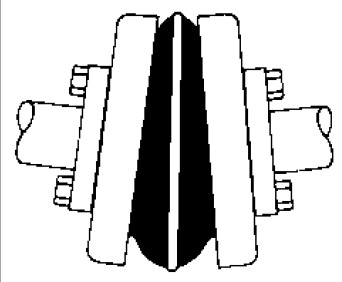 corresponds to your application.
corresponds to your application.
Phase 3: Calculate the Design Torque of one’s application by multiplying the Nominal Torque calculated in Step 1 from the Application Services Aspect determined in Phase two.
Style Torque = Nominal Torque x Application Support Component
Step four: Using the Sleeve Effectiveness Information Chart 2 select the sleeve material which best corresponds to your application.
Stage five: Utilizing the S-Flex Nominal Rated Torque Chart three find the acceptable sleeve materials column for the sleeve selected in Phase four.
Phase 6: Scan down this column to the 1st entry wherever the Torque Value while in the column is greater than or equal to your Layout Torque calculated in Step 3.
Refer for the optimum RPM worth from the coupling size to make sure the application requirements are met. If the optimum RPM value is much less than the application necessity, S-Flex couplings are not proposed to the application.
Note:
If Nominal Torque is much less than 1/4 in the coupling’s nominalrated torque, misalignment capacities are diminished by 1/2. As soon as torque value is found, refer to your corresponding coupling size while in the initial column of the S-Flex Nominal Rated Torque Information Chart three .
Phase seven: Compare the application driver/driven shaft sizes for the maximum bore size readily available around the coupling chosen. If coupling max bore just isn’t substantial adequate for the shaft diameter, pick the next greatest coupling that could accommodate the driver/driven shaft diameters.
Step 8: Employing the Item Selection tables, come across the ideal Keyway and Bore size necessary and find the variety.
admin
February 22, 2021
We supply flexible sleeve for S-Flex coupling in 3 designs: one-piece strong, one-piece split, and two-piece with retaining ring
The one-piece split style and design offers remedies for applications with special necessities wherever smaller shaft separations inhibit the set up of the one-piece reliable sleeve
Pre-molded teeth along the diameter with the sleeve engage with teeth from the coupling flanges
No clamps or screws are desired to connect the flanges with the flexible sleeve which securely lock together below torque for smooth transmission of electrical power
Torque is transmitted by shear loading from the sleeve
All three sleeve components are really elastic which permits the S-Flex coupling to guard connected gear from unsafe shock loading, vibration, and shaft misalignment
JE, JN, JES, JNS Sleeve Types
These sleeves function a one-piece layout molded in EPDM & Neoprene rubber. In the case of JES & JNS Varieties, the one-piece design is split to provide for ease of set up and removal.
E, N Sleeve Styles
These sleeves attribute a two-piece design with retaining ring. The E Type is molded  in EPDM rubber and the N Type is molded in Neoprene. The two-piece layout is ideal for applications in which there is difficulty in separating the shafts with the driver and driven.
in EPDM rubber and the N Type is molded in Neoprene. The two-piece layout is ideal for applications in which there is difficulty in separating the shafts with the driver and driven.
H, HS Sleeve Kinds
These sleeves attribute both a one-piece sound (H) and two-piece split
(HS) style and design and are molded of Hytrel. The sleeves in Hytrel material are designed to transmit electrical power for high torque applications. Because of your style and design and the properties from the Hytrel molded sleeve, the H and HS sleeves should not be used as direct replacements for EPDM or Neoprene sleeves, and can only be used with S, TF, or SC flanges.
Sleeve Products
EPDM ?§C Unless otherwise specified, S-Flex couplings are supplied with EPDM flexible sleeves. EPDM has good resistance to commonly used chemicals and is generally not affected by dirt or moisture. Color is black.
NEOPRENE ?§C Neoprene provides very good performance characteristics for most applications and offers a very good resistance to chemical and oil conditions. Color is black with a green dot.
HYTREL ?§C Hytrel is a polyester elastomer designed for high torque and high temperature applications and offers excellent resistance to chemical and oil conditions. Color is orange.
admin
February 22, 2021
Elastomer In Shear Sort Couplings
The basic style and design in the S-Flex coupling guarantees ease of assembly and reputable efficiency. No specific resources are desired for installation or removal. S-Flex couplings is usually utilized in a wide range of applications.
Capabilities
Effortless to install
Servicing No cost
No Lubrication
Dampens Vibration and Controls Shock
Torsionally Soft
Double Engagement
Traits and Efficiency Facts
The S-Flex coupling style is comprised of 3 parts: two flanges with internal teeth engage an elastomeric versatile sleeve with external teeth
Torque is transmited via the flanges mounted on the two the driver and driven shafts via the sleeve
Misalignment and torsional shock loads are absorbed by shear deflection while in the sleeve
The shear characteristic with the S-Flex  coupling is quite effectively suited to absorb affect loads
coupling is quite effectively suited to absorb affect loads
The S-Flex coupling presents combinations of flanges and sleeves which can be assembled to fit your specific application
Thirteen sizes are available with torque capabilities that range from 60 in-lbs to 72,480 in-lbs
The S-Flex flanges are presented in 5 models which are made from zinc or cast iron
Sleeves can be found in EPDM rubber, Neoprene to deal with a wide selection of application specifications
Safety from misalignment, shock, and vibration:
PARALLEL:
The S-Flex coupling accepts as much as .062 in of parallel misalignment without having put on. The flexible coupling sleeve minimizes the radial loads imposed on products bearings, an issue usually linked with parallel misalignment.
AXIAL:
The S-Flex couplings is usually utilized in applications which need a restricted amount of shaft end-float devoid of transferring thrust loads to gear bearings. Axial motion of somewhere around 1/8 inch accepted.
ANGULAR:
The flexing action of your elastomeric sleeve plus the locking feature with the mating teeth permits the S-Flex coupling to effectively take care of angular misalignment as much as 1??.
TORSIONAL:
S-Flex couplings effectively dampen torsional shock and vibration to safeguard linked equipment. The EPDM and Neoprene sleeves have torsional wind-up flexibility of 15?? at their rated torque. Hytrel presents 7??wind-up.
admin
February 20, 2021
SW Style Coupling
Sizes range from L090 to L190
Ordering needs deciding on UPC numbers for two typical L hubs and 1 snap wrap spider with snap ring
Each L and SW Variety couplings, decide on hubs through the standard bore and keyway chart (pages JW-11 and JW-12) greatest RPM for SW + Ring is 1,750 RPM
LC coupling makes use of a snap wrap spider using a collar instead of the retaining ring
Jaw In-Shear Coupling
Ordering necessitates choosing item numbers for two typical hubs, one particular In-Shear elastomer and one In-Shear ring.
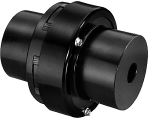
L Kind Coupling
Sizes variety from L035 to L276
Ordering needs picking out UPC numbers for two typical L hubs and 1 normal open or solid center elastomer (spider)
H Sort Couplings
The H Type coupling includes two hubs, two inside sleeves, one cushion set and one particular collar with hardware. H Kind coupling hubs are supplied with an inside sleeve. For technical assistance, please get hold of Lovejoy Engineering.
Options
Higher torque and bore capability compared to the C-Line series jaw coupling
Elastomeric cushions are radially removable
Cushions accessible in SXB rubber and Hytrel
RRC Form Radially Removable Spacer Coupling
RRC Kind couplings selection from sizes RRC226to RRC2955.
The RRC Type coupling consists of:
2 RRC Hub Adapters (includes bolts)
one Spacer assembly consisting of:
2 RRC Jaw rings
1 collar with hardware
one set of SXB (NBR) cushions
admin
February 20, 2021
C Form Couplings
The C Variety coupling includes two common hubs, one cushion set and collar with hardware.
Capabilities
Better torque and bore capacity compared to the L-Line series jaw coupling
Elastomeric cushions are radially removable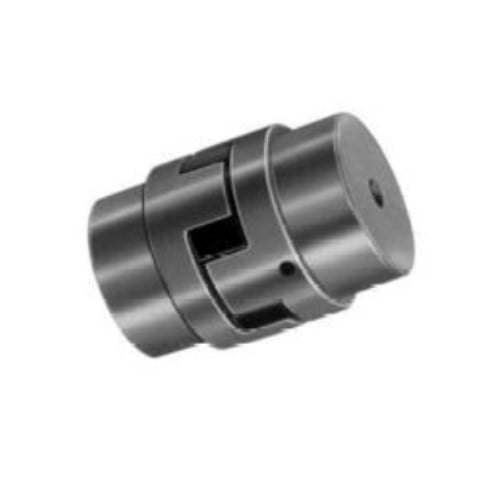 Cushions accessible in SXB rubber and Hytrel
Cushions accessible in SXB rubber and Hytrel
RRS and RRSC Variety Radially Removable Spacer Couplings
RRS Form couplings array from sizes RRS090 to RRS225. The RRS Style
coupling consists of:
RRS090 – RRS110:
two Common RRS Hubs
1 Spacer Assembly consisting of:
2 snap wrap spiders w/o ring
two collars with screws
one spacer
RRS150 – RRS225:
1 Normal RRS Hub
1 Typical RRSC Hub – Drilled for collar
one Spacer Assembly consisting of:
two snap wrap spiders w/o ring
two collars with screws
one spacer
Note:
RRS Variety Inch Hubs offered typical with two set screws at 90°.
Features
Common API primarily based spacers out there
Radially removable inserts
Typical Lovejoy hub layout with added set screw at 90°
admin
February 20, 2021
The LC Kind coupling consists of one particular regular L Type hub (without the need of collar attachment), one LC Sort hub (provides collar attachment), one conventional snap wrap center and a single collar with screws. Features
Radially removable insert
Collar makes it possible for for greatest speed of three,600 RPM
Collar manufactured from 1018 Steel
Notes:
These “LC” hubs are drilled and tapped to accept collar mounting screws however the collar and hardware are usually not integrated.
See L Type (inch or metric) coupling chart for standard hub.
Tolerances for bore and keyways are uncovered in Engineering Data section .
All hubs are provided standard with a single set screw.
When referencing the amount within this table, include things like 685144 being a prefix to the amount proven.
AL and SS Form Couplings
The AL Style coupling includes two hubs and 1 spider.
Capabilities
Interchangeable with all hub sizes standard to the L-Line and AL-Line solutions
Readily available within a variety of distinct finished bore and keyway combinations
Finished bores passivated for further rust protection
AL Style Couplings
The AL Type coupling includes two hubs and one particular spider.
Options
Aluminum material is corrosion resistant
Lightweight
Hubs compatible with normal Lovejoy hub style (except AL150)
admin
February 19, 2021
Jaw Variety Coupling Choice Procedure
The selection approach for figuring out the appropriate jaw coupling size and elastomer involves applying the charts proven on the following pages. There are three parts to get selected, two hubs and one elastomer. When the shaft dimension of your driver and driven in the application are with the same diameter, the hubs selected might be the identical. When shaft diameters vary, hubs chosen will vary accordingly.
Data required prior to a coupling could be picked:
HP (or KW) and RPM or Torque of driver
Shaft sizes of driver and driven equipment and corresponding keyways
Application description
Environmental circumstances (i.e. severe temperature, corrosive problems, area limitations)
Measures In Picking out A Jaw Coupling
Step 1: Ascertain the Nominal Torque of one’s application by utilizing the next formula:
Nominal Torque = in-lb = (HP x 63025)/RPM
Nm = (KW x 9550)/RPM
Stage two: Working with the Application Support Aspects Chart one choose the 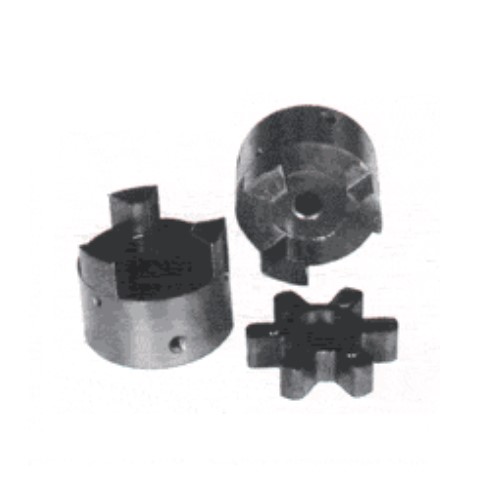 service issue which best corresponds to your application.
service issue which best corresponds to your application.
Stage 3: Determine the Style Torque of one’s application by multiplying the Nominal Torque calculated in Phase 1 from the Application Services Component established in Step two.
Design Torque = Nominal Torque x Application Support Component
Step 4: Working with the Spider Performance Information Chart 2, select the elastomer materials which greatest corresponds to your application.
Step five: Using the Jaw Nominal Rated Torque Chart 3 , locate the appropriate elastomer materials column for that elastomer picked in Phase four.
Scan down this column for the 1st entry the place the Torque Value while in the proper column is better than or equal to your Style and design Torque calculated in Phase 3.
When this value is located, refer on the corresponding coupling dimension within the initially column of your Jaw Nominal Rated Torque Chart 3 .
Refer to the highest RPM worth for this elastomer torque capability to make certain that the application prerequisites are met. If the requirement is not really happy at this time, yet another style of coupling might be expected for that application. Please talk to Lovejoy engineering for assistance.
Phase 6: Review the application driver/driven shaft sizes to the optimum bore size obtainable to the coupling selected. If coupling bore size isn’t huge ample for that shaft diameter, choose the following greatest coupling that will accommodate the driver/driven shaft diameters.
Stage seven: Making use of the UPC number assortment table , obtain the ideal Bore and Keyway sizes required and find the variety.
admin
February 19, 2021
Elastomers In Compression
We presents four types of elastomer patterns to permit for further flexibility in addressing specific application needs. A single piece models are used in the “L” and “AL” models (known as spiders) and many portion “load cushions” are used in the “C” and “H” model couplings. The load cushions are in sets of 6 to 14 pieces based upon coupling size.
Strong Center Spider
The sound center style is usually used design when shafts of the driver and driven equipment is often stored separate by a conventional gap
Open Center Spider
The open center design and style lets for that shafts of the driver and driven to be positioned within a short distance
Open center spiders offer you shaft positioning versatility but possess a reduce RPM capacity
Cushions
Used exclusively for that C and H Type couplings
Load cushions are held in location radially by a steel collar that is connected to among the hubs
Snap Wrap Versatile Spider
Layout enables for straightforward elimination from the spider with no moving the hubs
Allows for near shaft separation the many way up to the hubs greatest bore
Maximum RPM is 1,750 RPM using the retaining ring, but if utilised with the LC Sort (with collar) the standard RPM rating in the coupling applies
Design is available in NBR and Urethane only, and in limited sizes
Spider Components
SOX (NBR) Rubber
The normal materials that is highly versatile materials that’s oil resistant
Resembles organic rubber in resilience and elasticity, and operates proficiently in temperature ranges of -40° to 212° F (-40° to 100° C)
Urethane
Has one.five times greater torque capacity than NBR
Great resistance to oil and chemicals
Materials provides less dampening impact and operates at a temperature range of -30° to 160° F
Hytrel
Flexible elastomer created for high torque and high temperature operations
Operates in temperatures of -60° to 250° F (-51° to 121° C)
Bronze
Rigid, porous, oil-impregnated metal insert exclusively for minimal speed (max 250 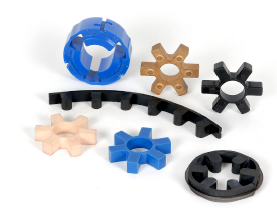 RPM) applications requiring large torque abilities
RPM) applications requiring large torque abilities
Not affected by water, oil, dirt, or severe temperatures – operates in temperatures of -40° to 450° F (-40° to 232° C)
admin
February 19, 2021
The Jaw Type couplings are supplied inside the industry?¡¥s greatest assortment of stock bore/keyway combinations. These couplings require no lubrication and give extremely reputable service for light, medium, and hefty duty electrical motor and inner combustion power transmission applications.
Functions
Fail-safe ¡§C will still execute if elastomer fails
No metal to metal speak to
Resistant to oil, grime, sand, moisture and grease
Far more than 850,000 combinations of bore sizes
Most forms obtainable from stock in 24 hours
Applications contain power transmission to industrial tools like pumps,  gear boxes, compressors, blowers, mixers, and conveyors. Jaw Variety couplings can be found in 24 sizes from a minimal torque rating of three.5 in¡§Clbs to a highest torque rating of 170,004 in¡§Clbs and a bore choice of .125 inches to seven inches.Our common bore system covers AGMA, SAE, and DIN bore/keyway and spline bore combinations.
gear boxes, compressors, blowers, mixers, and conveyors. Jaw Variety couplings can be found in 24 sizes from a minimal torque rating of three.5 in¡§Clbs to a highest torque rating of 170,004 in¡§Clbs and a bore choice of .125 inches to seven inches.Our common bore system covers AGMA, SAE, and DIN bore/keyway and spline bore combinations.
The Jaw Form coupling is accessible in the variety of metal hub and insert elements. Hubs are presented in sintered metal, aluminum, bronze, steel, stainless steel, and ductile iron.
L Sort
Coupling provides typical shaft-to-shaft connection for general industrial duty applications
Normal L Form coupling hub supplies are both sintered iron or cast iron
LC Sort
Utilizes the conventional L Form hubs that has a snap wrap spider and retaining ring
Suited for applications above one,750 RPM
AL Style
Aluminum hubs provide light bodyweight with low overhung load and reduced inertia
Superb resistance to atmospheric situations, best for corrosive setting applications
SS Kind
The SS Kind coupling gives highest safety against harsh environmental situations
Sizes SS075-SS150 readily available from stock, other sizes available on request
RRS Sort
Center ?¡ãdrop out?¡À segment of this coupling offers right shaft separation, though also making it possible for quick elastomer installation devoid of disturbing the hubs or requiring the realignment of shafts
Accommodates American and European sector typical pump/motor shaft separations
The spacer is produced of glass reinforced plastic, cast iron, or aluminum
SW Variety
Common L Style coupling which has a snap wrap elastomer with retaining ring
Well suited for conventional shaft to shaft connection generally industrial goal applications below 1,750 RPM
C & H Forms
Couplings deliver regular shaft-to-shaft connection for medium (C) and Hefty (H) duty array applications
Regular C coupling hub is produced of cast iron, when the H is constructed of ductile iron